The Spain Culture
Spain’s Culture Reflects the Past, but It’s Still Strong Today
In Spain culture is king. A lot of Spaniards express their national, regional and even individual identity – their sense of “Spanish-ness” and “self” - through the country’s traditions, customs, and culture. Hundreds of years ago, Spain conquered much of the Western Hemisphere (and Pacific islands like the Philippines). Although those areas are now independent, Spain’s culture is known and revered throughout large parts of the world. Even today, for example, traditional Spanish bullfights are an important part of the culture of many Latin American countries.
Spanish cuisine is another example of the country’s widespread cultural influence – nowadays, tapas restaurants are springing up around the globe.
The Spain culture has been heavily influenced by several great conquering civilizations – the ancient Phoenicians, the pre-Roman Celts, the Roman Empire, the post-Roman Visigoths, and the Moors. Spain was ruled by the Moors for nine long centuries (until the Reconquista was completed in 1492), and the Moorish influence there is extensive even today.
The Spain culture is unique because it blends all these “foreign” influences. It plays a large role in Spanish life, and it has a significant impact on what you’ll see and experience as you travel in the country. Here’s some quick background information on different aspects of Spain’s unique, exceptionally interesting national culture.
Religion and Religious Holidays
Many Spaniards think of their religion as a way of life – a part of their culture – not just a one-day-a-week thing. Almost 80% of all Spaniards are Roman Catholic, and religious holidays have an extensive role in Spain’s culture. For example, Holy Week (the week before Easter, called “Semana Santa”) is celebrated with elaborate street parades and other festivities. And each Spanish city, town and village has a patron saint. A town’s saint’s day festival typically includes a parade down gaily decorated streets, but nighttime bonfires and fireworks are also very common. Some places also hold bullfights to honor their patron saints.
Christmas also has great traditions. Learn more about Christmas in Spain.
Speaking of Bulls …
Almost every Spanish town has its own bullring. Bullfighting pits a matador against a bull in a fight to the death. It’s a bloody sport (always fatal for the bull and sometimes for the matador, too!), but one that’s conducted with a great deal of pageantry, artistry and flair. To Spaniards, bullfights are an art form and a matter of honor. And one of Spain’s most famous events is the “running of the bulls” (the “encierro”) that occurs every July in Pamplona. Bulls run freely down a Pamplona street, chasing the men running ahead of them. The run ends in Pamplona’s bullring – the third largest in the world. Annually, over a million people come to Pamplona to witness this uniquely Spanish spectacle.
If you're traveling in Spain, see a bullfight. Learn more about bullfighting shows here.
Art and Literature Plays a large role in the Spain Culture
Spain has been the home of many renowned painters and sculptors over the years. The heyday of Spanish art occurred between the 17th and 19th centuries, when painters like Goya, El Greco, Murillo and Velasquez were producing their masterpieces. But that’s not to say that the 20th century didn’t produce its share of superb Spanish artists, including Miró, Salvador Dali and the most famous of all – Pablo Picasso. Miguel de Cervantes (author of Don Quixote) carries the brightest torch for Spanish literature.
Spanish Cuisine
Despite 900 years of domination by the Moors and the Islamic influences they brought to Spain, pork is a popular ingredient in Spanish cuisine. For centuries, a Spanish family who ate pork was proving they were “pureblood Spaniards” (i.e., they weren’t Moorish or Jewish) in addition to satisfying their taste buds. All that aside, tapas and paella are two mainstays of Spanish cuisine, which in some ways resembles classic Mediterranean dishes. “Tapas” is a term used to refer to small bites of hot or cold food. There are all sorts of tapas and they’re made from various ingredients – cheese, olives, squid, fish, beef, and so on. They are usually eaten as appetizers or snacks, but many Spanish taverns provide free tapas when you buy a drink. Some Spanish bars and restaurants serve meals entirely comprised of an assortment of tapas.
Paella is an amazingly delicious rice-based dish that originally
comes from Valencia, Spain. Many non-natives think of paella as the
country’s “national dish,” but it’s actually more of a regional thing.
Although paella comes in many varieties, there are three main types:
seafood, classic Valencian meat or poultry, and a mixed dish that uses
meat or poultry and seafood as ingredients. All of them also use rice, olive oil, vegetables and various seasonings as ingredients.
In Spain’s villages and smaller towns, meals are often prepared from
delicious fresh ingredients bought the same day at a nearby open-air
street market. Garlic, onion, olive oil and tomato are frequent
ingredients in Spanish dishes. Fresh fruit is a typical dessert. And don't forget the awesome Spanish wines, good anytime of day!
Here's what to expect on a traditional Spanish food menu.
Siestas after Midday Meals
Siestas are afternoon naps that are usually taken shortly after lunch. They’re strongly identified with the Spanish culture and lifestyle, but also with Mexico. The tradition probably got its start because it’s easy to get drowsy after a meal when the weather’s hot.
Architecture in Spain Culture
Like several other aspects of Spain’s culture, Spanish architecture is heavily influenced by the country’s history. Roman aqueducts can still be seen (in Segovia, for example) and there are many examples of Spanish Gothic architecture, such as the ornate cathedral in Burgos. But several of the most impressive (and famous) structures in Spain were built by the Moors during their long occupation of the country. The Alhambra in Granada and the Great Mosque in Córdoba are two examples.
Much more recently, Catalan architect Antoni Gaudi’s “Modernista” style produced a number of Spanish masterworks, including Barcelona’s still-uncompleted Sagrada Familia – a world-renowned Roman Catholic basilica and one of the country’s most-visited buildings. Gaudi was nicknamed “God’s Architect” and seven of his buildings have been designated as UNESCO World Heritage Sites. He’s such a cultural hero in Spain that many would like to see him declared a saint. By the way, Spain is the home of 42 UNESCO World Heritage Sites – the second-highest number of any country and a source of great national pride.
Learn more about Spanish Art and Architecture here
The Influence of Regional Cultures
Spain’s regions are distinctly different from each other, and each one has its own regional culture. Every one of these regional cultures has contributed to Spain’s traditions and customs. Their contributions might be food, music, dance, wines, art, architecture or something else, but they all add flavor to the pot that we call the Spain culture.
More on Spanish Culture...
Books, Movies, Music related to Spain
Return from Spain Culture to Southern Spain Travel Homepage
Copyright© southern-spain-travel.com All Rights Reserved. Content Protected By DMCA.
Authentic Spain Food
It's true! Get tapas, jamon, olive oil, manchego and chorizo shipped directly from Spain
Get Football Tickets
Click here to buy tickets to Spains Sports events
Book a Hotel
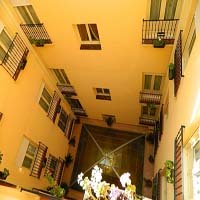
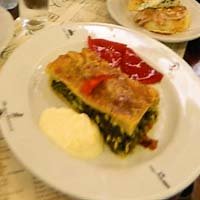
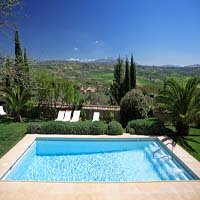
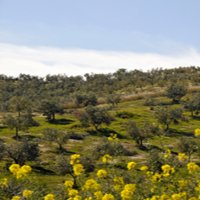
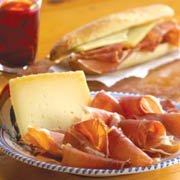

New! Comments
Have your say about what you just read! Leave me a comment in the box below.